When did humanity as we know it come into being? Science preaches that life began in the primordial cauldron that it says Mother Earth was in her infancy.
Several generations of secular scientists have taught that billions of years ago lightning bolts struck puddles of naturally occurring chemicals, and that this somehow produced the first reproducing life forms. Through the mysterious nuances of a still-young discipline called evolution, these primeval, simple organisms supposedly developed, becoming more and more complex through eons, with innumerable life forms becoming extinct along the way until modern humans appeared.
Yet the disciples of this godless gospel are terribly embarrassed when asked why, if this monumental act of creation started out with such humble equipment as lightning and mud puddles, they cannot duplicate it in their state-of-the-art laboratories. Nor can they explain why it is not still continuing. Perhaps the time has come to look elsewhere for an answer.
In the Beginning
The Bible, naturally, has a different spin on things. Genesis 1:1 tells how God created the heavens and the Earth, but the human race as we know it today is not mentioned as being fashioned until chapter 2, verse 7.
And here is the key question: if orthodox science cannot even clarify the creation and proliferation of life, how can it be certain homo sapiens are the only sentient life form this planet has ever supported? If we use the Bible as a template, how much time may have elapsed between Genesis 1:1 and Genesis 2:7, and what self-aware creatures may have flourished in this period?
Although artifacts indicating prehistoric, technologically advanced civilizations do exist (chagrined paleontologists call them “erratics,”) discussing the likelihood of such antediluvian cultures is not the subject of this writing. What is to be discussed here is what may have happened to them. We find hints from antiquity.
Back in the USSR
When the Eastern Bloc collapsed in 1991 the whole world breathed a sigh of relief. The decades-old threat of a global nuclear war seemed to have passed. Yet what if the East-West rivalry had not ended with a whimper? What if it had ended with a bang?
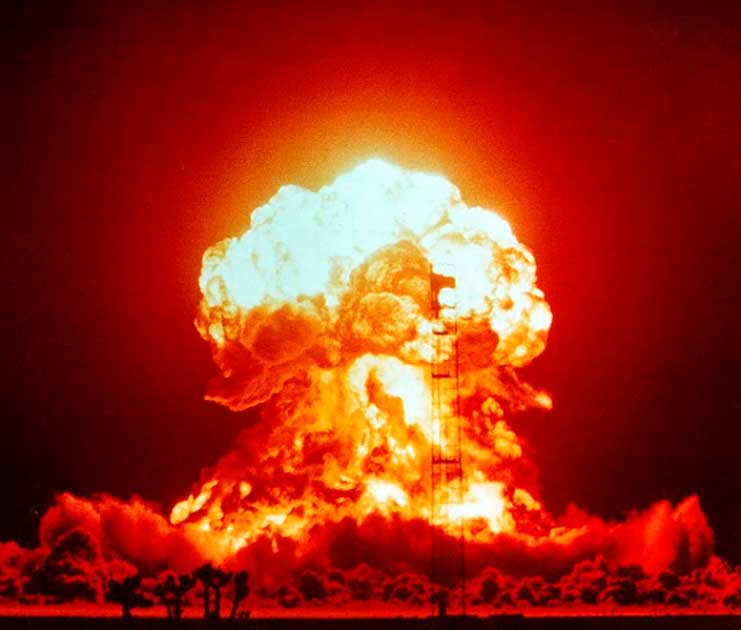
Considering the destructive potential of the atomic arsenals produced and stockpiled by the superpowers, our world could well have been reduced to irradiated charcoal by thermonuclear war had the United States and Soviet Union decided to settle their differences in this fashion. The human race easily could have been annihilated, and Mother Earth left in a state too radioactive to support higher life forms for tens of thousands of years.
Could it have happened before? The signs are not that hard to read for those willing to interpret them for what they seem to be.
Physical Clues from Past and Present
“Tektite” is not a word with which many people are familiar. It is a scientific term, and it describes one of those erratics that bedevil prevailing attitudes. Tektites are not well known outside the scientific establishment, but they far predate today’s science.
When sand is superheated the individual grains fuse into glass. This process is called vitrification. When the first atomic bomb was detonated in the New Mexico desert in 1945 its heat melted the desert sand into millions of small, glassy fragments.
Some of the scientists who examined this nuclear debris were stunned to find it familiar. It looked identical to the baffling artifacts called tektites that for centuries have been found all over the world. The land areas in the vast region stretching from Tasmania to north of the Philippines to the East Indies to East Africa are littered with tektites. Analysis of these objects reveals they are approximately 700,000 years old.
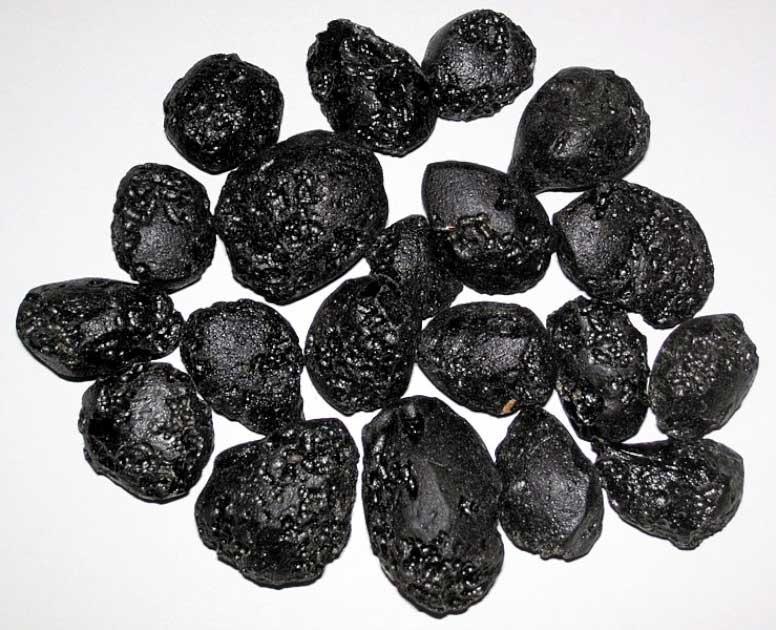
Although they had long been assumed to be meteorites there was the question of why, if of extraterrestrial origin, none have fallen in recent times? Why did they shower onto such an immense area 700 millennia ago, and then stop forever?
- Vimanas, The Hindu Machines: Did Ancient India Have Flying Saucers?
- Who Were The Nephilim? Biblical Demigods From Before The Flood
Furthermore, nearly all meteorites are composed of iron or stone–not glass. The 1945 New Mexico atomic test may provide a clue. Considering the lack of any other plausible explanation, could it be that the tektites covering so much of the Pacific basin and East Africa were blasted aloft by nuclear explosions and then rained back down onto this huge area?
Elsewhere in the world there is similar evidence.
The Burning Desert
It would appear the Middle East being a tinderbox is nothing new. The entire desert between Damascus, Syria and Baghdad, Iraq is littered with charred, heat-blackened rocks. Literally thousands of square miles of Mesopotamia must have at one time have been subjected to tremendous heat, and this is not a volcanic region.
Such stones have been found in Australia, France, India, South Africa and Chile. They are composed mainly of aluminum and beryllium, and analysis shows them to have been exposed not only to extreme heat, but also powerful doses of radioactivity. Other non-volcanic areas seem to have suffered the same fate.
North of Beirut, Lebanon there is the ancient city of Baalbek. In ruins since Biblical times, the conurbation was dedicated to the worship of the sun god Baal. Archeologists have dug up tektites in Baalbek, and many of the huge stone platforms (long assumed to be in some way connected to Baal worship) built by the city’s long-ago inhabitants, are vitrified.
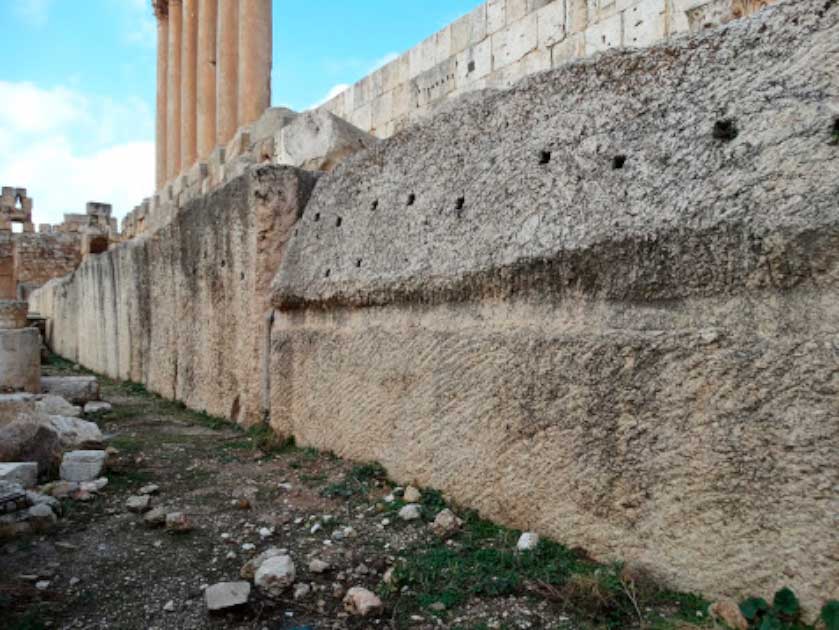
This raises the question of could Baalbek’s population have been wiped out by atomic warfare, and the stone platforms vitrified by this. Or were the stones used themselves as launching pads for nuclear bomb-carrying missiles?
The standard explanation for the partial melting of these rock structures is that they were struck by lightning. The problem here is that for this to occur it would take many lightning bolts striking the same spot.
Lightning is a rare occurrence in the arid Middle East, and if this were the answer one would think we would be familiar with the process. Why is it not still happening? This is especially relevant considering that instances of vitrification are worldwide.
Here, There and Everywhere
Vast areas of Mongolia’s Gobi Desert are vitrified. Scattered throughout northern Europe and the British Isles are stone forts and towers so old there are not even any legends to account for them. Many of these structures are vitrified.
Outside Cuzco, Peru there is a vitrified hillside covering 18,000 square yards (15,000 square meters). The Indian epic Mahabharata dates back over 3,000 years and describes a battle scene in which a “blazing missile” was shot into the midst of an army and produced “a radiance of smokeless fire” that instantly immolated chariots, men, elephants, forests and caused rivers to boil. The passage in question is downright sobering:
“It was as if the elements had been unleashed. The sun spun round. Scorched by the incandescent heat of the weapon, the world reeled in fever. Elephants were set on fire by heat and ran to and fro in a frenzy to seek protection from the terrible violence. The water boiled, the animals died, the enemy was mown down and the raging of the blaze made the trees collapse in rows as in a forest fire. The elephants made a fearful trumpeting and sank dead to the ground over a vast area. Horses and war chariots were burnt up, and the scene looked like the aftermath of a conflagration. Thousands of chariots were destroyed, then deep silence descended on the sea. The winds began to blow, and the Earth grew bright. It was a terrible sight to see. The corpses of the fallen were mutilated by the terrible heat so that they no longer looked like human beings. Never before have we seen such a ghastly weapon, and never before have we heard of such a weapon.”
There is no way of knowing how long before Mahabharata was written that this incident, with its echoes of Hiroshima, took place, but the real question is how could the ancients have known how to perfectly describe an atomic blast if they had not actually witnessed it? If there were witnesses who later described these events they would seem to have been quite fortunate to have survived the great burning. It is likely that the reason for the paucity of accounts of how vitrification occurred is that few survived to tell the tale.
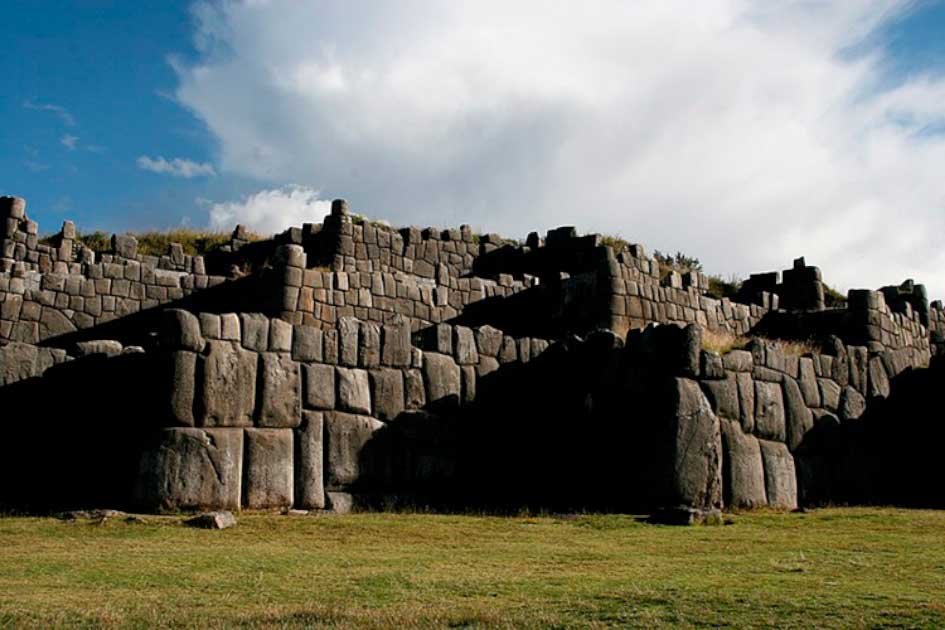
Many pre-Inca ruins in South America are vitrified. The fate of the civilization(s) that constructed such impressive ruins as Sacsayhuaman and Tiahuanaco has long been a subject of debate. Could they have been exterminated by a thermonuclear holocaust that partially melted their huge stone cities, hence providing much-later investigators with a solitary clue as to the fate of these primordial cultures. Such finds occur elsewhere in the New World.
There are the ruins of a prehistoric town in Death Valley, California. The same vitrified rocks and sand are present, and today’s technology could only produce such heat through the use of atomic weapons or laser beams.
Throughout the vicinity of this cremated community no grass will grow. Overall, it appears someone with an extremely advanced technology laid waste to a great deal of Earth’s surface long, long ago. By returning to primeval India we find evidence that this war was aerial as well as terrestrial.
Another Indian classic from millennia ago recounts how three “floating cities” were destroyed by what sounds uneasily like nuclear missiles. Known as the Drona Parva, it contains this unsettling passage:
“Formerly the valiant Asuras had in heaven three cities. Each of these cities was excellent and large. One was made of iron, another of silver, and a third of gold. The golden city belonged to Kamaloksha, the silver city to Tarakaksha, and the third made of iron had Vidyunmalin for its Lord. When, however, the three cities came together in the firmament the Lord Mahadeva pierced them with that terrible shaft of his consisting of three knots. The Danavas were unable to gaze at that shaft inspired with the Yuga fire and composed of Vishnu and Soma.”
Exploration of India reveals clues that support these primordial accounts. A 19th Century British explorer named DeCamp was traveling through the region between the Ganges River and the mountainous area of Rajmahal when he came across stone ruins he described as having been melted to the point they were fused together “like lumps of tin struck by a stream of molten steel.”
Another Englishman, named J. Campbell, found ancient ruins south of Rajmahal of a vitrified stone floor that appeared to have once been an internal courtyard. There was no sign of any building that may have covered the courtyard. If one had ever been there it apparently was burned away completely.
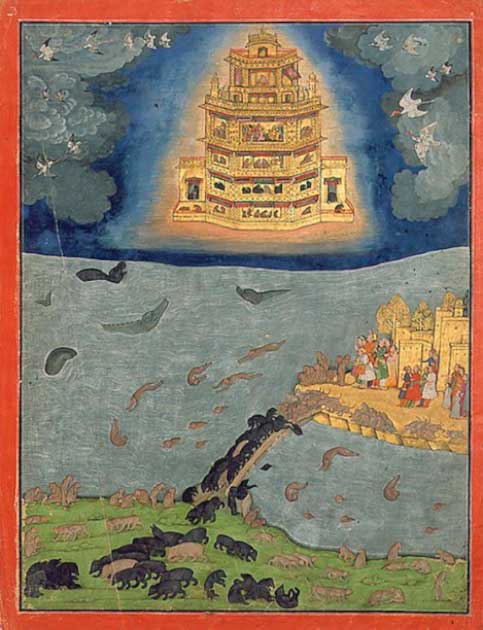
During a 19th Century hunting expedition deep inside an Indian forest the British sportsman/explorer H.J. Hamilton stumbled upon an ancient building that had been exposed to such heat that its walls were crystallized. Fired by curiosity he got the shock of his life when he entered the structure:
“Suddenly the ground gave way under my feet with a curious noise. I got into a safe place and then widened the hole, which had appeared, with my rifle butt, and lowered myself into it. I was in a long and narrow corridor. At the bottom I saw a kind of table and chair made of the same “crystal” as the walls. An odd shape was crouching on the seat, with vaguely human features. Looking at it from close by I thought it might be a statue damaged in the course of time, but then I glanced at something which filled me with horror. Under the “glass” that covered the “statue” a skeleton could clearly be seen.”
With the finding of vitrified buildings, furniture and even human bodies the descriptions found in Mahabharata and Droma Parva are sounding more plausible and worrisome all the time. Yet another ancient Indian writing, called the Mausola Parva, describes how an entire army was decimated by a “gigantic messenger of death” that poisoned food stores, turned birds white and caused survivors’ hair and fingernails to fall out.
It likens the detonation to “ten thousand suns”. Those who survived the initial blast seem to have known what to do in order to survive, as the following indicates, “To escape from this fire the soldiers threw themselves in streams to wash themselves and all their equipment”.
Although India seems to have been the center of this hypothetical prehistoric thermonuclear holocaust (or perhaps it is just that more written accounts from India survived), the clues of its destruction are worldwide. Furthermore, who can say whether all these artifacts date from the same period?
Armageddon may have already occurred, and more than once. Did earlier civilizations exterminate themselves? We have the legends of the lost societies of Atlantis, Mu and Lemuria. Could they have obliterated themselves, obliterated each other, or been obliterated by outside (perhaps extraterrestrial) forces so long ago that not only do we have the barest (albeit unmistakable) evidence of their existence and passing, but also the radioactive contamination of their global war has had time to dissipate?
Open Eyes, Open Minds
Scientific dogma says these suppositions are ludicrous, that no global, sentient civilization could have preceded us. Yet this establishment cannot even tell us where we came from, why we age or even why we sleep.
According to conventional laws of physics bumblebees, with their tiny wings, should not be able to fly…but they do. Perhaps the time has come to kick the pedestal from beneath the Great God Science. Who knows what we might learn? Maybe we would figure out how to survive our own potentially lethal technology.
Top Image: Ancient depiction of an apparent astronaut: evidence of an ancient advanced civilization? Source: Luca Giarelli / CC BY-SA 4.0.
by Kelly Bell